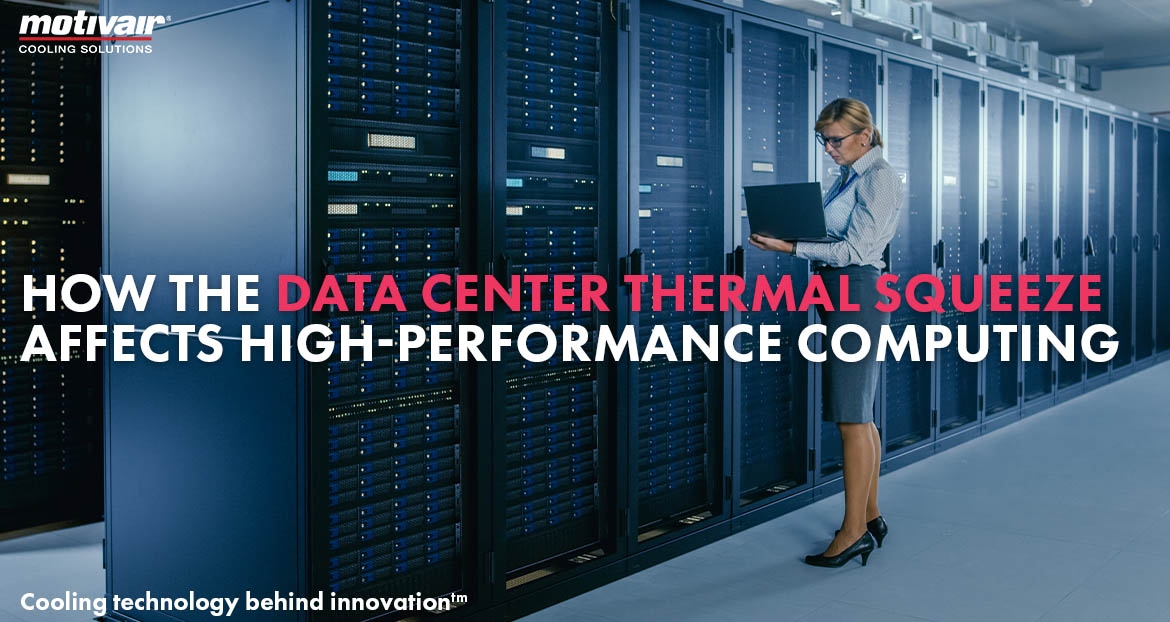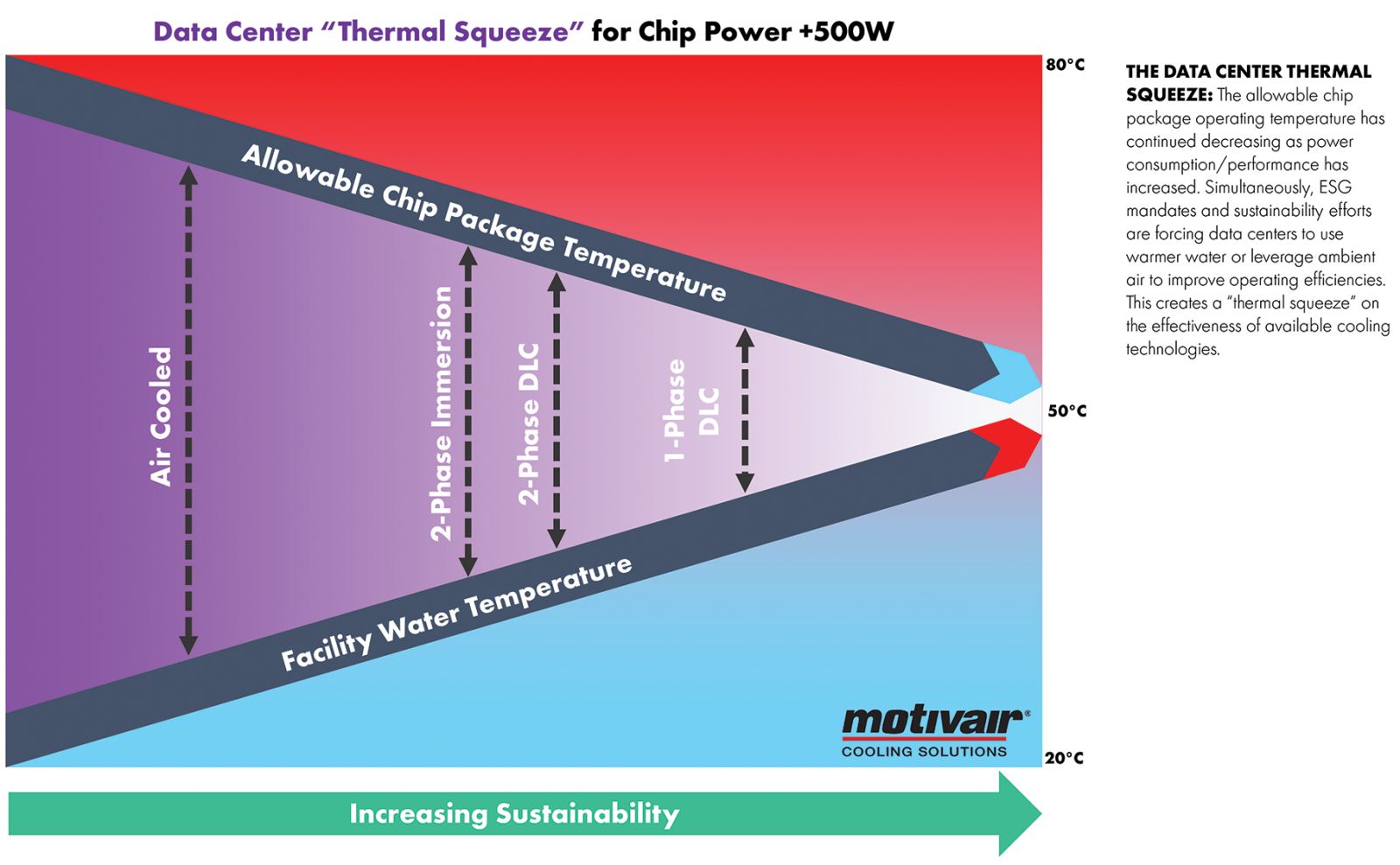Motivair Cool News
May 9th, 2023
What is the Data Center Thermal Squeeze?

There’s a vicious cycle plaguing the data center industry.
With each new advancement in data-heavy applications like artificial intelligence (Chat GPT), or machine learning, next generation processors are helping reach new innovations. Allowable chip package operating temperature has continued decreasing as power consumption and performance has increased.
This has led to a steady progression in data center cooling technology and thermal effectiveness: We’re moving thermal management – and water – closer to the chip level to maintain optimal performance.
Simultaneously, ESG mandates and sustainability efforts are forcing data centers to use warmer water or leverage ambient air to improve operating efficiencies.
This constrained race of decreasing allowable chip package operating temperatures, limited choices for thermally effective cooling technologies, and growing sustainability efforts is creating a “thermal squeeze” for data centers.

HOW THIS AFFECTS DATA CENTERS
The demand for data centers has grown as the global economy and everyday life becomes more connected.
The United States accounts for 40% of the global market, according to McKinstry, noting “in the US market alone, demand—measured by power consumption to reflect the number of servers a data center can house—is expected to reach 35 gigawatts (GW) by 2030, up from 17 GW in 2022.”
As data center demand increases, so has chip power consumption to meet that demand.
As ASHRAE’s Technical Committee 9.9, Mission Critical Facilities, Data Centers, Technology Spaces, and Electronic Equipment shows in its whitepaper “Emergence and Expansion of Liquid Cooling in Mainstream Data Centers”, the industry has shifted between three periods – The Single Core Trend, the Multi-Core, Trend, and the Power War Trend.
The industry is reaching the tipping point of the Power War trend, with chip temperatures reaching 350-500 watts, growing hotter and the degree of cooling difficulty steadily increasing.
Learn More: HPCWIRE on Dell's Latest Study
HOW TO MITIGATE THE DATA CENTER THERMAL SQUEEZE
Air cooling and liquid cooling are the primary drivers for data center cooling.
The most common liquid cooling approach from a physics perspective is either single phase, where the fluid of choice remains in a liquid form or two-phase, where the fluid of choice is boiled and then condensed in a repetitive cycle.
Data center operators can leverage one of the following:
- Air cooling: Using CRAHs and CRACS to move heat away from IT gear
- Single-phase immersion or Two-phase immersion: Submerging IT gear in dielectric, non-conductive fluid
- Two-phase direct liquid cooling or Single-phase direct liquid cooling: Directing fluid through cold plates placed on top of various computer chips to remove heat.
Dell Technologies recently tested the thermal effectiveness of the above leading data center cooling technologies, determining single-phase direct liquid cooling the most thermally effective.
This should serve as a signal to data center operators to evaluate infrastructure needs – like coolant distribution units, in-rack manifolds, quick connects, and rear-door heat exchangers – now and into the future.
Maintaining consistent and effective thermal performance at the chip level will require a holistic evaluation of cooling technology so data centers can continue to capture improved return on capital and reduce environmental impacts.